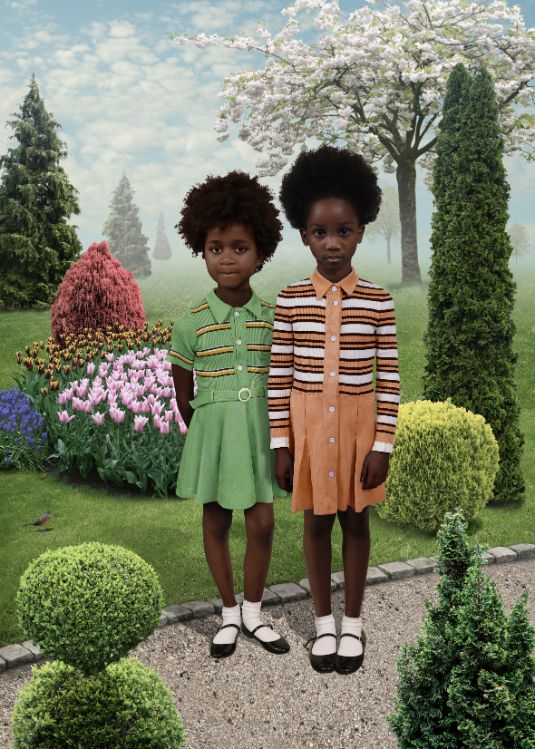Ruud van Empel’s distinctive work embraces a spectrum of references including Dutch Old Masters, German Renaissance painters and early photomontage artists. Through his images, van Empel explores notions of youth and innocence by channelling many of his own childhood experiences. His most recognised work features black children, pictured alone or in pairs, set against a dense paradise of supersaturated lush greenery. Imbuing innocence with a hint of danger, van Empel’s work forces the viewer to question what is comfortable and real, as they are presented with this strange beauty.

Sunday #2, 2012
Van Empel’s pioneering techniques have completely changed the face of digital photography. Using a vast library of digital body parts, fabrics and foliage, van Empel creates dream-like photographic utopias, where nothing is exactly as it seems. Each figure is a hybrid; resulting from his painstaking synthesis of hundreds of diverse fragments taken from his own photographs. Eyes, noses and lips are collaged together to create the highly polished new human forms that inhabit his images. The process is painstaking: a single work can take up to three months to complete. The colours and textures are individually altered, and each setting digitally staged. Van Empel uses Photoshop to utterly transform reality, and turn it into something at once alluring and unsettling.
A recurring theme in Empel’s work is the innocence of children, portrayed particularly through the choice of clothing, which adorns his subjects. The artist has meticulously chosen clothing, which reflects the formal Sunday dress that he and his siblings would wear to church as a child. This is intended as a comment on the mixed feelings of both oppression and pride, which such clothes instilled. So integral is the accuracy of such clothing to his work, that Empel will often digitally construct garments from memory by photographic specific materials and patterns and ‘stitching’ them together
(By Giles Huxley Parlour)
